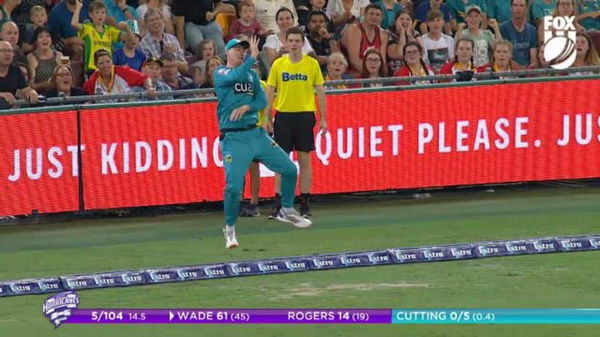It looked like a great team effort when Tom Banton and Matthew Renshaw teamed up to complete a catch after a few juggles and a pass on the boundary rope in the Big Bash League (BBL) 2019/20.
Watch What’s Trending Now!
Eventually, it was. But it took some rule book reading to understand the legality of the catch.
Renshaw initially took the catch when Wade hit the ball towards him at long-on, but as he was getting over the boundary rope, he flipped the ball in the air and he himself went into the boundary rope. In the attempt, Renshaw could not flip the ball back into play and the ball was coming into the boundary rope. He then jumped and passed the ball onto Tom Banton while in air and the young Englishman completed the catch.
ADVERTISEMENT
Article continues below this ad
Matthew Wade has to go after this spectacular effort from Matt Renshaw that will lead to plenty of debate about the Laws of Cricket! #BBL09 pic.twitter.com/wGEN8BtF5u
— cricket.com.au (@cricketcomau) January 9, 2020
The third umpire eventually gave it out, and although it gave rise to some confusion, it clearly seemed to be out as per the laws of the game.
ADVERTISEMENT
Article continues below this ad
Amidst the confusion on the legality of the catch, Lord’s cricket stadium tweeted how the catch was completely within the laws of the game
👏 Amazing catch today in the @BBL!
Under Law 19.5, the catch is deemed lawful.
The key moment is when he first touches the ball, which is inside the boundary. He’s airborne for his second contact.pic.twitter.com/ZTWMjAhffT
— Lord’s | Ticket Ballot now open! (@HomeOfCricket) January 9, 2020
What the Law says
Law 19.5.2 in the ICC Laws of cricket states that: “A catch will be fair only if, in every case either the ball, at any time or any fielder in contact with the ball, is not grounded beyond the boundary before the catch is completed.”
ADVERTISEMENT
Article continues below this ad
Also see: Ben Laughlin Takes a Flying Catch in the BBL 2019/20
The law further: “A fielder who is not in contact with the ground is considered to be grounded beyond the boundary if his/her final contact with the ground, before his/her first contact with the ball after it has been delivered by the bowler, was not entirely within the boundary.”
ADVERTISEMENT
ADVERTISEMENT
ADVERTISEMENT
ADVERTISEMENT




